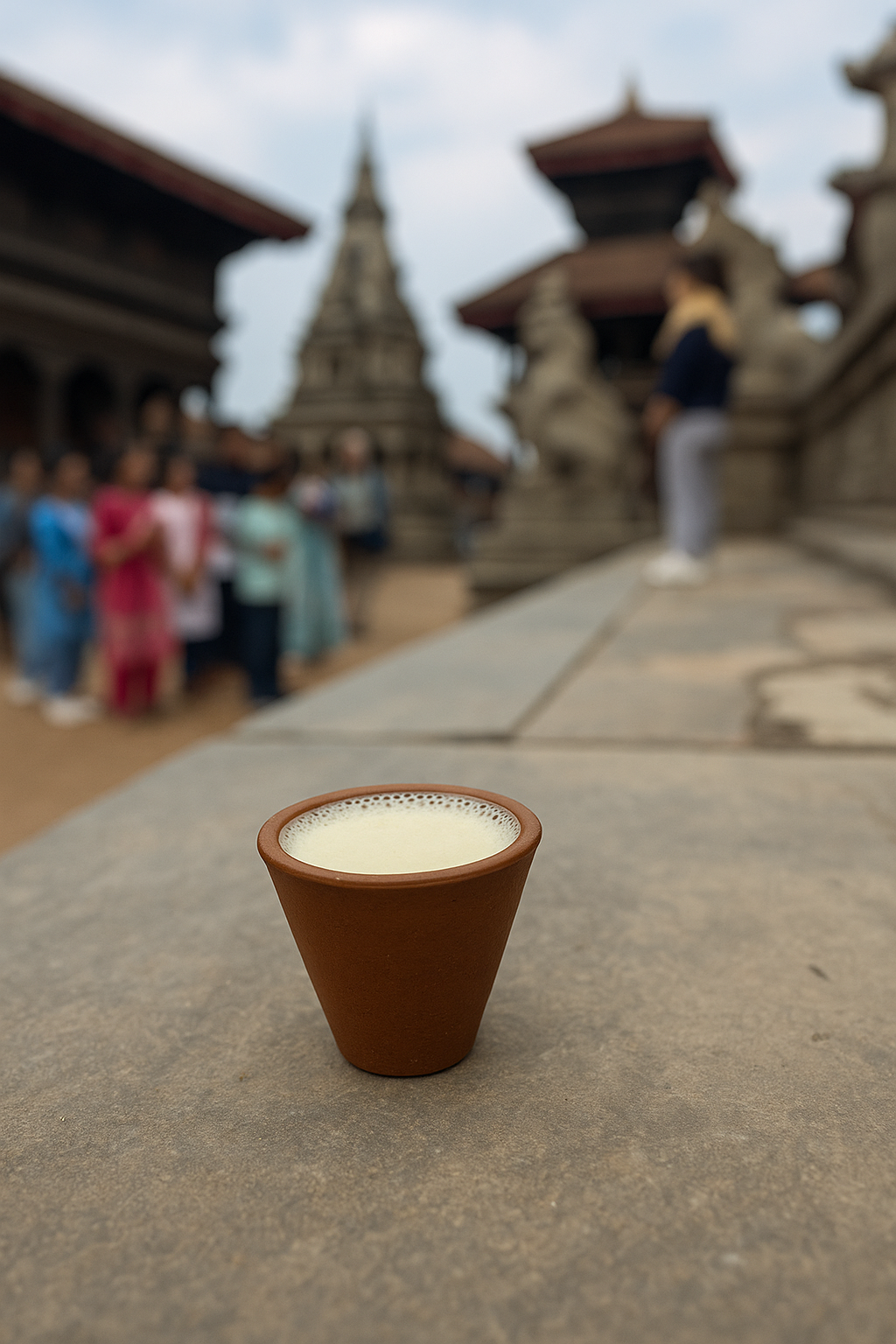In the narrow alleys of Bhaktapur in Nepal, one of the three ancient royal cities of the Kathmandu Valley, there’s a fermented treasure deeply rooted in Newar culture: Juju Dhau. The name literally means “King Yogurt” – and trust me, it lives up to the title.
A Flavor with History
Juju Dhau dates back to the Malla dynasty, when Bhaktapur was a thriving center of art and culture. Legend has it that a king held a contest to find the best yogurt in the valley. The yogurt from Bhaktapur won with its creamy texture and unique flavor, and ever since, it’s been crowned the king of yogurts.
But this isn’t just any dessert. In Newar culture, Juju Dhau plays a central role in religious ceremonies, festivals, and life rituals. It’s part of the Sagan – a symbolic offering that represents purity and prosperity.
How the Royal Yogurt Is Made
Making Juju Dhau is almost like a sacred ritual. No shortcuts here – every step matters. Here’s how it’s traditionally done:
- Fresh buffalo milk: Its high fat content is key to that rich, creamy consistency.
- Slow heating in iron pots (karai): The milk is gently heated and stirred constantly to avoid burning.
- A touch of brown sugar: Just enough to give it a hint of sweetness.
- Cooling and fermentation: Once the milk is warm (not hot), a bit of starter culture (dhau pusa) is added.
- Poured into clay pots (kataaro): These porous pots absorb excess moisture and help the yogurt thicken.
- Careful incubation: The pots are placed on rice husks, covered with more clay lids, and wrapped in warm cloths. The yogurt ferments for several hours until firm and luscious.
A Sensory Delight
The result? A yogurt so thick it won’t fall out if you flip the pot upside down. It has a mildly sweet, tangy flavor, with an earthy aroma from the clay pot – absolutely unique.
In Bhaktapur, you can find Juju Dhau at street stalls or buy it directly from the people who still make it with pride. If you ever visit, don’t leave without trying it!
Want to Make It at Home?
You can try making a home version using high-quality whole milk (buffalo milk if you can get it), a good yogurt starter, and an unglazed ceramic pot. It won’t be exactly the same – but you’ll get pretty close to this fermented gem.
In a Nutshell
Juju Dhau isn’t just yogurt – it’s living history, culture, and craftsmanship in a clay pot. A delicious reminder of how fermentation connects people, flavors, and traditions across the world.
